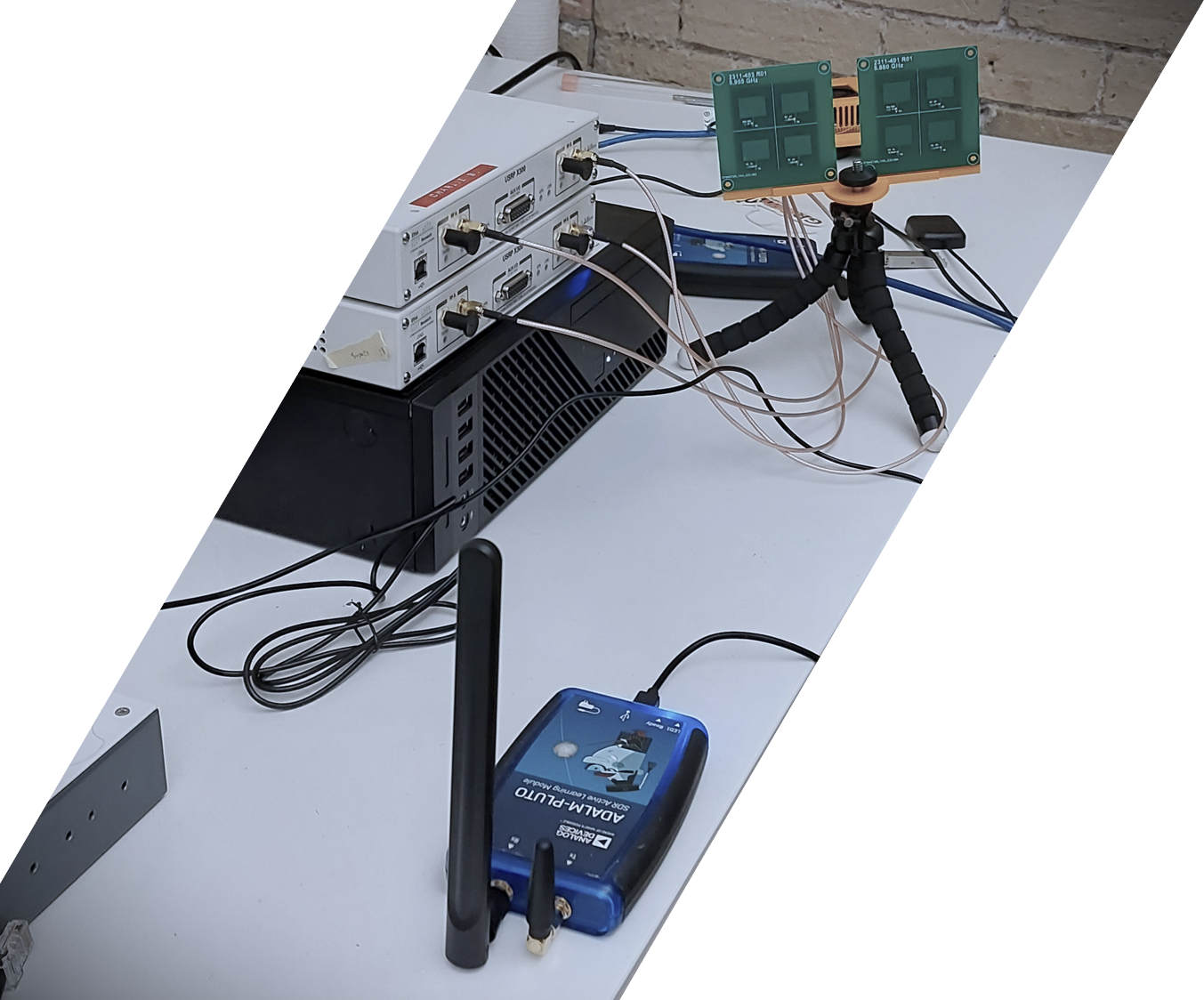Develop Radio Inference Applications with Qoherent
Applying machine learning to RF systems requires advanced expertise at the intersection of wireless communications engineering, digital signal processing, and artificial intelligence. Qoherent develops functional prototypes of Radio Inference Applications that validate technical concepts, establish clear feasibility, and define a pathway to production deployment. Our goal is to increase your Technology Readiness Level (TRL) from concept to working prototype, providing the evidence needed for further development investment.
Accelerate Development with Our IP Portfolio
Prototyping projects at Qoherent benefit from an extensive library of pre-configured model templates and proven reference architectures. The portfolio contains over 30 prototype-ready models organized into seven primary categories of RF signal processing problems. Each category includes multiple specialized sub-problems with dedicated models designed for real-world conditions, enabling faster progress and reducing technical risk.
- Summary
- Signal
- Interference
- Beams
- Spectrum
- Fingerprints
- Channels
- Signal detection and classification
- Interference recognition and management
- Beamforming and spatial processing
- Spectrum usage prediction and optimisation
- RF fingerprinting for device identification and authentication
- Channel and propagation environment modelling
- Advanced AI-driven signal processing
Signal Detection & Classification
- Modulation & Protocol Recognition: Classify 20+ modulation types including QAM, PSK, FSK variants. Detect WiFi, LTE, 5G NR, Bluetooth, and IoT protocols.
- Impairment Recognition: Measure and quantify degradations of signal data, e.g. EVM, SNR, skew.
- Signal Enhancement: Improve SNR in challenging conditions or implement a custom learned filter.
- Blind Signal Analysis: Extract parameters without prior knowledge.
Interference Management
- Interference Recognition: Identify several interference types from intentional jamming to unintentional emissions.
- Source Separation: Isolate signals of interest in congested spectrum.
- Signal Presence Detection: Sub 10-ms detection in wideband spectrum.
- Anomaly Detection: Real-time identification of unexpected signals.
Beamforming & Spatial Processing
- Beam Selection: Lightweight ML-driven beam selection for low-element phased arrays.
- Angle of Arrival Estimation: Multi-antenna direction finding.
- Intelligent boosting and suppression: Dynamic beam pattern optimization.
Spectrum Intelligence
- Occupancy/Vacancy Prediction: Forecast spectrum utilization and occupancy.
- Dynamic Spectrum Assignment: Optimize channel allocation in real-time.
- Usage Pattern Recognition: Identify temporal patterns in spectrum usage.
RF Fingerprinting
- Specific Emitter Identification: Unique device identification from signal characteristics.
- Front-end Recognition: Classify transmitter types and manufacturers.
- Authentication Support: Verify transmitter validity for security applications.
Channel & Propagation Environments
- Channel State Prediction: Forecast channel conditions for adaptive systems.
- Channel Recognition: Identify multipath, fading, and atmospheric effects.
- Link Quality Estimation: Predict communication reliability.
Advantages of Our IP Portfolio
Our IP portfolio provides proven models that accelerate your development timeline and reduce technical risk:
- Start from a higher Technology Readiness Level (TRL) using validated model architectures.
- Models designed specifically for RF environments, accounting for spectrum dynamics, non-stationary channels, and hardware impairments.
- Rapid adaptation of existing models to match customer-specific signal types, bandwidths, and deployment conditions.
- Architectures optimised for deployment on embedded SDR platforms, edge compute devices, and cloud infrastructure.
Our Prototyping Process
We apply a structured workflow to advance a concept into a validated Radio Inference Application with measurable TRL progression. Each stage combines systems engineering discipline with RF-specific machine learning expertise, using both simulation and over-the-air testing on software-defined radios to reduce development risk and accelerate delivery.
- Deployment environment and computational limits
- Integration requirements with existing systems
- Problem formulation to determine the system design and relevant components
- Prior art review to identify alternative starting points
- TRL assessment and target TRL definition for your specific application
Our iterative approach delivers results quickly:
- Algorithm selection from our IP library or custom development
- Model training with appropriate datasets
- Performance optimization for your constraints
- Real-world validation using SDR testbeds including brands such as Ettus Research and BladeRF
Every prototype undergoes rigorous testing:
- Performance across channel conditions
- Computational efficiency analysis
- Robustness to real-world impairments
- Detailed comparison to baseline approaches
- Functional prototype with trained model demonstrating core capabilities
- Performance validation against defined requirements
- Technical documentation including architecture, specifications, and integration guide
- TRL advancement report documenting the increase from initial to final TRL
- Path forward with clear next steps for production deployment
- European Space Agency – 6B.126: Developed interference recognition models detecting 30+ types of signal degradation relevant to satellite communications.
- Defence Research Agency: Delivered spectrum prediction models for network nodes achieving 97.5% collision avoidance.
- Canadian Space Agency – STDP R22: Produced low-latency, low-parameter-count beamforming models performing on par with handcrafted algorithms such as MUSIC.
- Defence Research Agency: Determined optimal configuration for a novel classification algorithm through evaluation of over 10,000 configurations.
